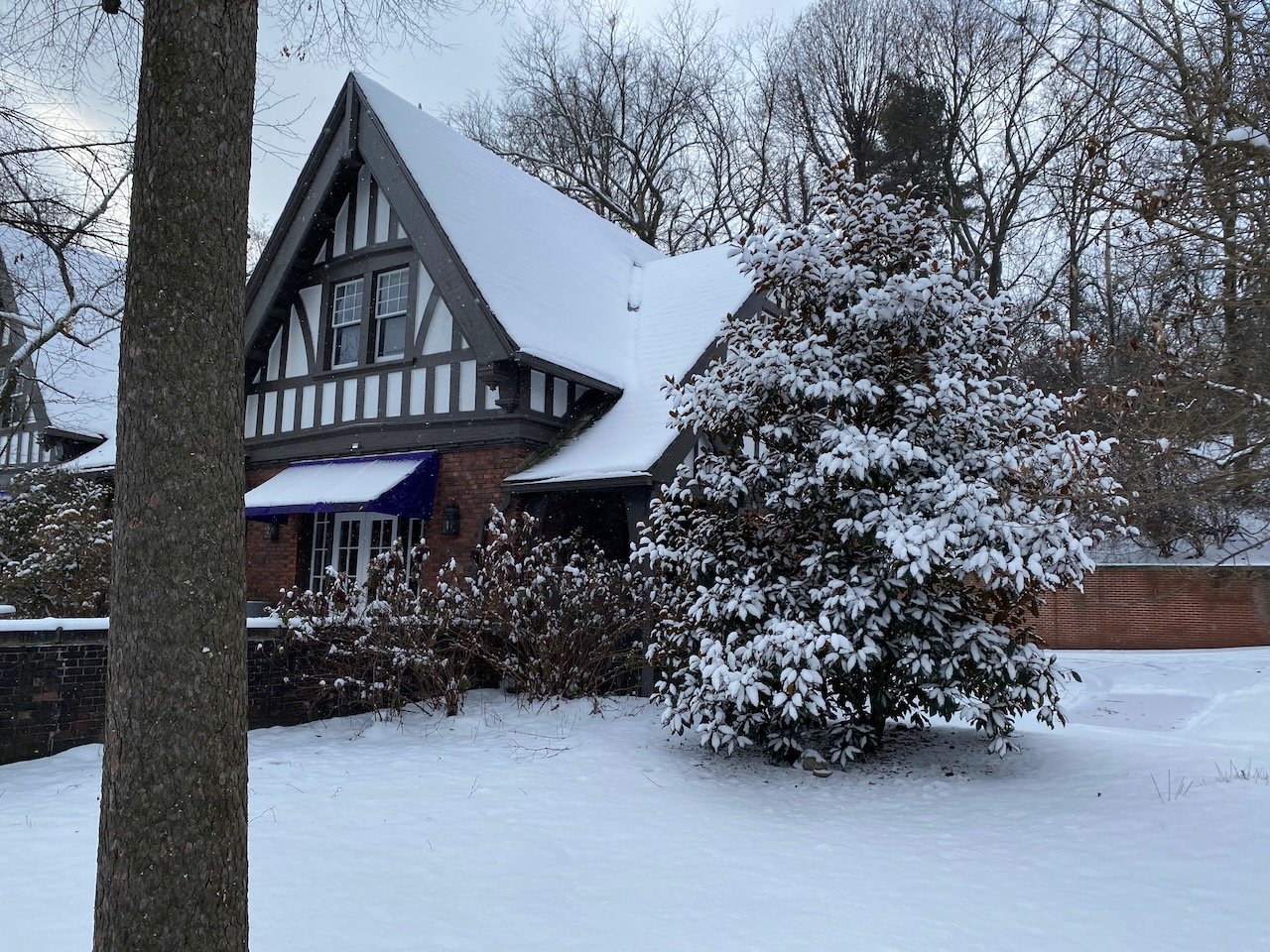What to Look for During a Winter Tree Walk in Shadyside
All the leaves are brown, and the sky is gray. Such a winter scene might conjure daydreams of escaping to the sunny hills of California.
But it could also inspire a walk around Chatham University’s Shadyside Campus, where 115 different varieties of trees form the botanical collection known as the arboretum.
The campus, which is lush and green in the summer and resplendent with fall colors in autumn, offers one of the most interesting winter walks in Pittsburgh, according to Joe Stavish, the director of education for Tree Pittsburgh.
“When we walk through a county park or a city greenspace, we often see a lot of trees, but a lot of the times it’s the same species over and over again,” Stavish said. “Chatham has laid out the campus with a nice collection of many different species.”
During an interview with Pulse@ChathamU, Stavish offered a few ideas for what students, staff, faculty, and campus visitors can keep an eye out for during a winter walk – you may want to have your Tree Guide and Walking Map handy.
Evergreens and other conifers
While deciduous trees shed their leaves in the autumn, evergreen trees stay green year-round.
At Shadyside Campus, you can spot an American holly with green leaves and red berries near the front of Falk Hall. Outside the nearby Coolidge Hall is an Eastern Canadian hemlock, with its short, round needles and small cones. The latter is one of Chatham’s “Champion Trees,” noted as such because of its health and longevity.
“They really stand out in the landscape,” Stavish said of the evergreen trees. “You really see them in the wintertime, because they have all of their leaves or needles on.” They also provide a habitat for small wildlife, such as birds, by blocking wind and harboring insects for food.
Stavish noted Chatham is also home to several deciduous conifers—cone-bearing trees that drop their needles, unlike the evergreen holly and hemlock trees. Dawn redwood, bald cypress, Japanese larch, and Eastern tamarack can be found at Shadyside.
Silhouettes and shapes
The absences of leaves or needles on Chatham’s trees provides an excellent opportunity to observe the silhouettes of different trees, Stavish said. “Trees have natural growth forms that are often hidden by their leaves,” he said.
Sweetgum trees, for instance, have a trunk that stretches towards the sky in a near-straight line. You can see an American Sweetgum near the Art & Design Center, just past where West Woodland Road meets Woodland Road. Other trees, like the dogwood trees on campus, grow multiple, wavy trunks.
“We can really look at the individual trees on campus and look at those overall silhouettes,” Stavish said.
Squirrels, birds, and other critters
Fewer leaves on the trees also means it might be easier to spot squirrels and birds bustling in the branches up above.
“We’re looking for signs of mammals,” Stavish said. “Maybe there’s some deer that have been rubbing bark off or rabbits that have been chewing through to get nutrients out of the younger shrubs and trees on campus.”
Chatham Shadyside, Stavish noted, has a noticeable population of black-colored gray squirrels. “I don’t see that in a lot of the other parks,” he said.
Berries, seeds, and buds
Winter is also a great time to get a closer look at the small treats that can blend into the greenery, like the bright red berries on holly trees or the fleshy red cones on yew trees.
If you’re already looking for signs of spring, take a look for leaf or flower buds—they start growing in the summertime, Stavish said, and are especially visible on certain trees now. Buckeyes have some of the largest.
Stavish said he tells people to use the pneumonic device “MAD Buck” to remember trees with buds that usually have buds on opposite sides of the same branch: maple, ash, dogwood, and buckeye trees. “If you find one bud on a branch, there’s another one exactly across from it on that same branch in that same location,” he said.
There’s also plenty of prickly sweetgum seeds still scattered around campus, along with acorns from the oak trees and Kentucky coffee tree seeds, which look almost like brown banana peels.
If you want to visit Chatham Shadyside and take a winter walk for yourself, tours can be scheduled here, but the campus is also free and open to the public. Those who want a guided tour of Chatham’s arboretum from Tree Pittsburgh should keep an eye on their calendar; this year’s tours haven’t been announced yet.
Learn more about the Chatham University Arboretum and download the tree guide and walking map.



